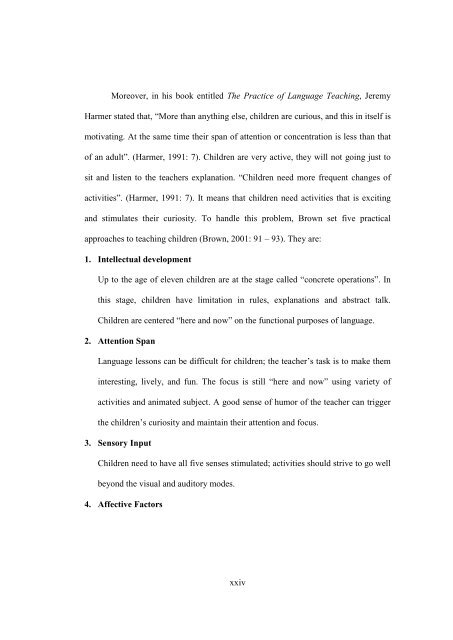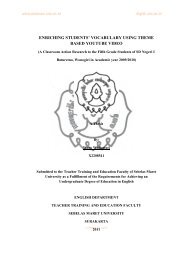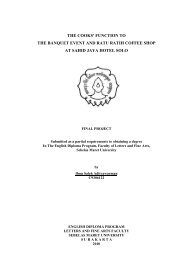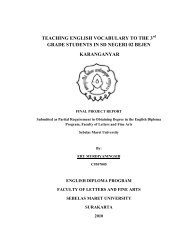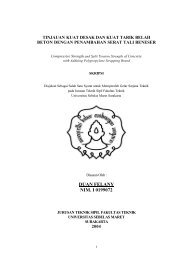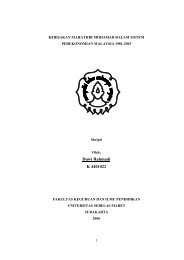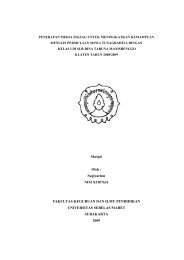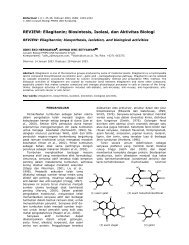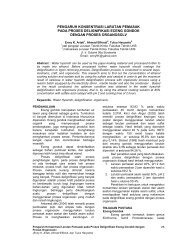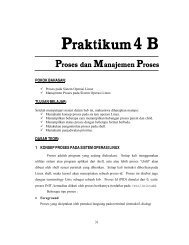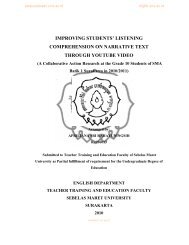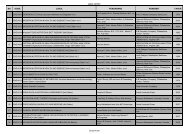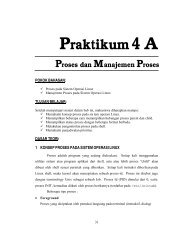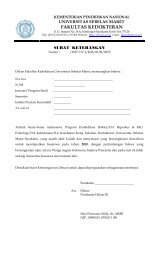grade students of elementary school in sdn gulon 169 jebres surakarta
grade students of elementary school in sdn gulon 169 jebres surakarta
grade students of elementary school in sdn gulon 169 jebres surakarta
You also want an ePaper? Increase the reach of your titles
YUMPU automatically turns print PDFs into web optimized ePapers that Google loves.
Moreover, <strong>in</strong> his book entitled The Practice <strong>of</strong> Language Teach<strong>in</strong>g, Jeremy<br />
Harmer stated that, “More than anyth<strong>in</strong>g else, children are curious, and this <strong>in</strong> itself is<br />
motivat<strong>in</strong>g. At the same time their span <strong>of</strong> attention or concentration is less than that<br />
<strong>of</strong> an adult”. (Harmer, 1991: 7). Children are very active, they will not go<strong>in</strong>g just to<br />
sit and listen to the teachers explanation. “Children need more frequent changes <strong>of</strong><br />
activities”. (Harmer, 1991: 7). It means that children need activities that is excit<strong>in</strong>g<br />
and stimulates their curiosity. To handle this problem, Brown set five practical<br />
approaches to teach<strong>in</strong>g children (Brown, 2001: 91 – 93). They are:<br />
1. Intellectual development<br />
Up to the age <strong>of</strong> eleven children are at the stage called “concrete operations”. In<br />
this stage, children have limitation <strong>in</strong> rules, explanations and abstract talk.<br />
Children are centered “here and now” on the functional purposes <strong>of</strong> language.<br />
2. Attention Span<br />
Language lessons can be difficult for children; the teacher’s task is to make them<br />
<strong>in</strong>terest<strong>in</strong>g, lively, and fun. The focus is still “here and now” us<strong>in</strong>g variety <strong>of</strong><br />
activities and animated subject. A good sense <strong>of</strong> humor <strong>of</strong> the teacher can trigger<br />
the children’s curiosity and ma<strong>in</strong>ta<strong>in</strong> their attention and focus.<br />
3. Sensory Input<br />
Children need to have all five senses stimulated; activities should strive to go well<br />
beyond the visual and auditory modes.<br />
4. Affective Factors<br />
xxiv


